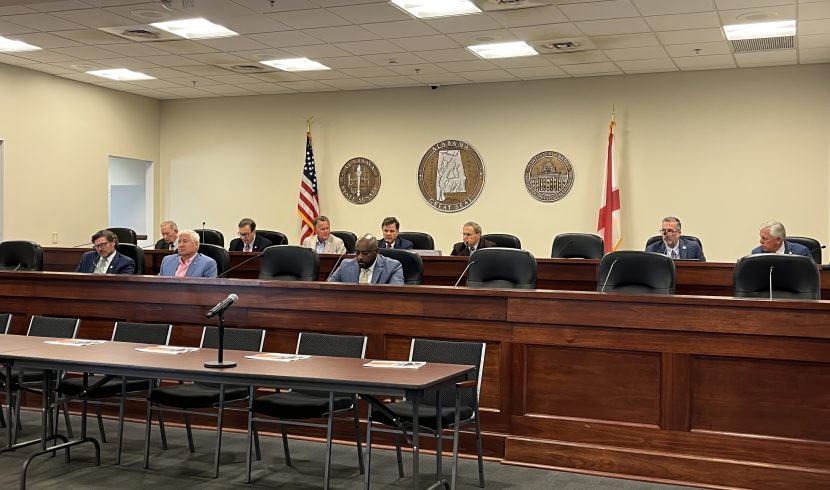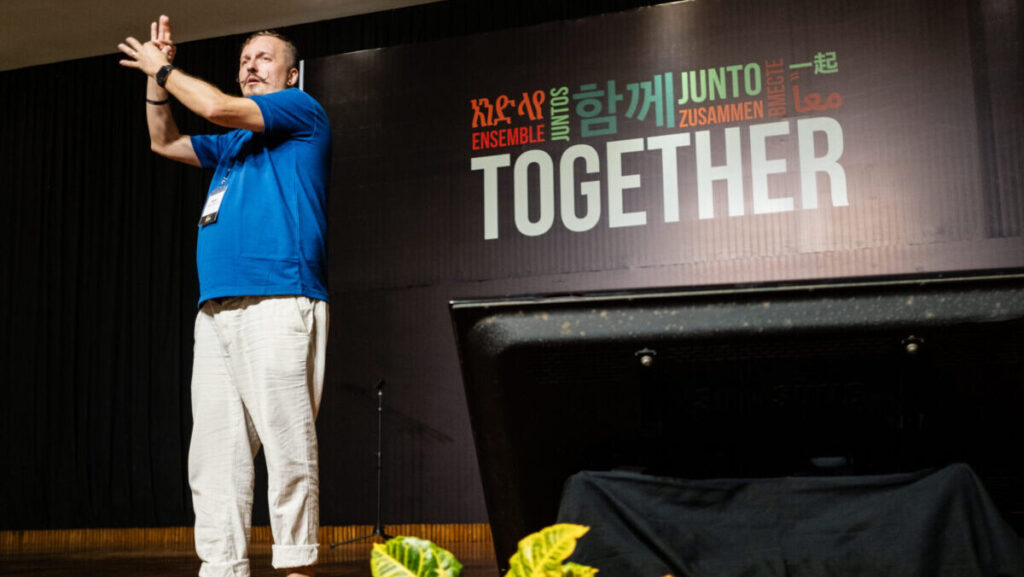By Martha Simmons
Correspondent, The Alabama Baptist
For a freedom-loving country, the United States locks up more people than any other nation in the world.
More than 2 million people are confined in American prisons, jails, juvenile detention centers and other types of correctional facilities. Nearly half a million of them haven’t even been convicted, yet they are sitting in local jails awaiting trial, many of them too poor to raise bail.
The federal Bureau of Justice Statistics (BJS) reported in April that the adult incarceration rate fell in 2016 to its lowest level in 20 years. According to BJS, the American adult incarceration rate has steadily declined since 2009 and is now at its lowest rate since 1996.
That decline, while encouraging, does not change the fact that the United States incarcerates a higher percentage of its own population than any other country in the world.
When you include the number of people behind bars with the number on parole, probation and community supervision, the current adult correctional population in America reaches nearly 6.5 million.
According to the nonprofit, nonpartisan Prison Policy Initiative, the United States has about 2.3 million people in prisons, jails and juvenile detention centers. That translates into a U.S. incarceration rate of 655 people per 100,000 population.
The nations with the next highest rates of imprisonment, according to the Prison Policy Initiative, are:
- El Salvador, with 614 per 100,000
- Turkmenistan, 583 per 100,000
- Cuba, 510 per 100,000
- Rwanda, 434 per 100,000
- Russia, 413 per 100,000
BJS and the World Prison Brief note that a lack of available data may mean that some countries, such as China, are not fairly represented among the national incarceration rankings. Nevertheless, the National Academies of Sciences, Engineering and Medicine reports that close to a quarter of all the world’s prisoners are held in American prisons.
“The U.S. rate of incarceration,” the National Academies reported, “with nearly 1 of every 100 adults in prison or jail, is 5 to 10 times higher than rates in Western Europe and other democracies”
Some states’ incarceration rates are even more stunning, according to the Prison Policy Initiative.
Oklahoma currently tops the list by locking up 1,079 out of every 100,000 of its citizens, followed by Louisiana, 1,052; Mississippi, 1,039; Georgia, 970; and Alabama — perennially among the highest-incarceration states — 946.
Looked at another way, Alabama’s incarceration rate of 946 per 100,000 population means that about one out of every 100 men, women and youth we encounter every day — at church, in school, at the mall — will be locked up at one time or another.
Extrapolate that to the number of family members with an incarcerated loved one, and the impact of mass incarceration comes into clearer view.
Children of imprisoned parents are especially at risk in the U.S., according to the National Institute of Justice, a federal research agency. They are six times more likely to eventually be incarcerated themselves, perpetuating the cycle. They are more likely to become depressed, aggressive and antisocial, and they are often trapped in severe poverty.
Families of formerly incarcerated parents often wind up homeless, unable to overcome the barriers to finding jobs and housing. With no way to make a living, many ex-offenders return to crime.
Economic burden
Taxpayers pay dearly for mass incarceration: $80 billion annually on jails, prisons, juvenile detention centers and other forms of incarceration. But that’s just the tip of the iceberg, according to a study published in 2016 by Washington University in St. Louis. Researchers found that mass incarceration in the United States actually costs taxpayers $1 trillion annually, or about 6 percent of gross domestic product.
“This is because corrections spending ignores costs borne by incarcerated persons, families, children and communities,” researchers said in their report.
“Examples of these social costs are the foregone wages of incarcerated persons, increased infant mortality and increased criminality of children with incarcerated parents. While these costs do not appear on government budgets, they reduce the aggregate welfare of society and should be considered when creating public policy.
“For every dollar in corrections costs, incarceration generates an additional $10 in social costs,” researchers said.
“More than half of the costs are borne by families, children and community members who have committed no crime. Even if one were to exclude the cost of jail, the aggregate burden of incarceration would still exceed $500 million annually.”
Every election season, candidates mention it. “Tough on crime,” “war on drugs” and “mandatory minimum sentences” make for good campaign slogans.
How we got here
As a premise for laws and policies, however, being too “tough” may make for unreasonably high rates of incarceration.
The Sentencing Project and Institute for Prison Ministries, a program of the Billy Graham Center at Wheaton College, reports a 500 percent increase in incarceration during the last 40 years, resulting in overcrowding at prisons and spiraling costs to states.
“Changes in law and policy, not changes in crime rates, explain most of this increase,” researchers report.
“Since the official beginning of the war on drugs in 1982, the number of people incarcerated for drug offenses in the U.S. skyrocketed from 41,000 in 1980 to nearly half a million in 2014. Today there are more people behind bars for a drug offense than the number of people who were in prison or jail for any crime in 1980. The number of people sentenced to prison for property and violent crimes has also increased, even during periods when crime rates have declined,” according to the report.
Moreover, Billy Graham Institute researchers say offenders are being sentenced to prison for much longer terms: “Harsh sentencing laws like mandatory minimums, combined with cutbacks in parole release, keep people in prison for longer periods of time. The National Research Council reported that half of the 222 percent growth in the state prison population between 1980 and 2010 was due to an increase of time served in prison for all offenses.”
It might be worth it, some would say, if there were proof that putting so many people behind bars made an appreciable difference in public safety.
However, the National Research Council, an arm of the National Academies of Science, Engineering and Medicine, reports, “The increase in incarceration may have caused a decrease in crime, but the magnitude is highly uncertain and the results of most studies suggest it was unlikely to have been large.”
How do we get our arms around this problem — spending a trillion bucks a year to be the number one incarceration nation in the world and for unprovable and probably negligible results? How do we make the right kind of changes?
Why should a Christian community of faith get involved? What would Jesus have us do?
During the coming weeks, The Alabama Baptist will run a series of articles introducing you to the people, policies and prisons that represent our state’s struggle with mass incarceration and the reform efforts being mounted at state and national levels.
We hope our readers will find in these stories a more personal understanding of what life is like for incarcerated people and their loved ones, and that they will discover ways to minister to them as Jesus instructed: “I was in prison and you came to visit me … I tell you the truth, whatever you did for one of the least of these brothers of mine, you did for Me” (Matt. 25:36, 40).






Share with others: